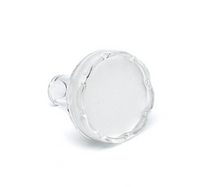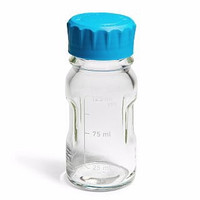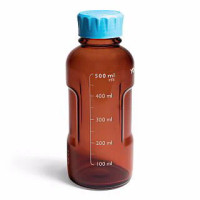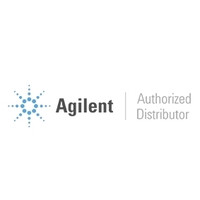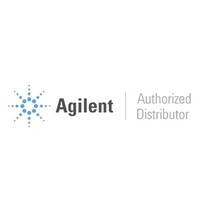Solvent Filters and Reservoirs

Chrom Tech supplies genuine Agilent InfinityLab solvent filters and glass reservoirs engineered for clean, reliable mobile-phase delivery in LC workflows. As an authorized Agilent distributor, we provide only authentic components designed to maintain instrument precision, protect pump performance, and ensure safer solvent handling in the laboratory.
Agilent’s redesigned 1 L and 2 L reservoirs are available in both amber and clear glass—ideal for preventing algae growth or supporting full solvent visibility depending on your application. All InfinityLab reservoirs integrate seamlessly with InfinityLab Stay Safe caps and are fully compatible with 1220, 1260, and 1290 InfinityLab LC Series instruments. These updated solvent bottles improve ergonomics, reduce handling risks, and streamline day-to-day operation in modern LC environments.
A glass bottle used to hold mobile phase for LC systems. Agilent InfinityLab reservoirs are available in amber (to limit light exposure) or clear (for visibility), and are optimized for safe handling and stable solvent delivery.
A submersible frit attached to the solvent inlet tubing that removes particulates before they enter the pump. Using genuine Agilent filters helps protect pistons, seals, and valves from abrasion and clogging.
A sealed solvent-management cap system designed to reduce vapor exposure, maintain mobile-phase purity, and standardize tubing connections across InfinityLab LC instruments.
The solvent or solvent mixture used to transport analytes through the LC system. High-purity mobile phases and properly filtered reservoirs are essential for stable baselines and reproducible chromatography.
Solvent reservoir material that blocks UV and visible light, preventing photodegradation and algae growth—ideal for light-sensitive mobile phases.
A transparent reservoir material that improves visibility of solvent levels and clarity—ideal for method development or monitoring solvent consumption.
Tubing that transfers solvent from the reservoir to the pump. Proper length, chemical compatibility, and filtration help maintain pump efficiency and reduce pulsation.

